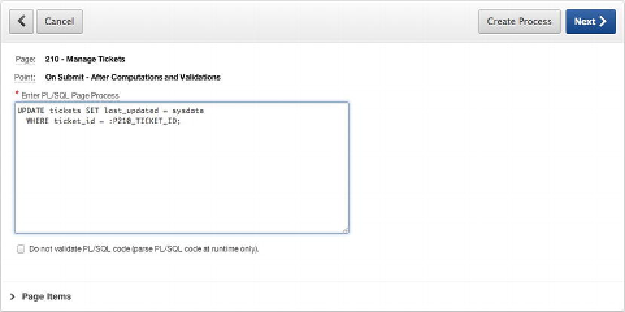Database Reference
In-Depth Information
code that has a
BEGIN
and an
END
that wrap the contents. You need to
follow PL/SQL syntax conventions, including ending statements with
semicolons. It's possible to nest anonymous blocks of code, but isn't ne-
cessary for this example:
10.
Enter the following SQL into the
Enter PL/SQL Page Process
text area
(see
Figure 8-33
):
UPDATE tickets SET last_updated = sysdate
WHERE ticket_id = :P210_TICKET_ID;
11.
Click the
Next
button, being careful not to click Create Process, because
you still want to apply a condition to this process.
Figure 8-33.
Click the Next button
12.
Leave both the
Success
and
Error
messages empty. These messages will
appear at the top of a page as feedback to the user after the process com-
pletes. Your requirements don't call for you to notify the user that the Last
Updated date was changed. Click
Next
again, being careful not to click
Create Process.
13.
In the condition section, change
When Button Pressed
to
SAVE (Apply
Changes)
, as shown in
Figure 8-34
. Finally, you may click the
Create Pro-
cess
button.

